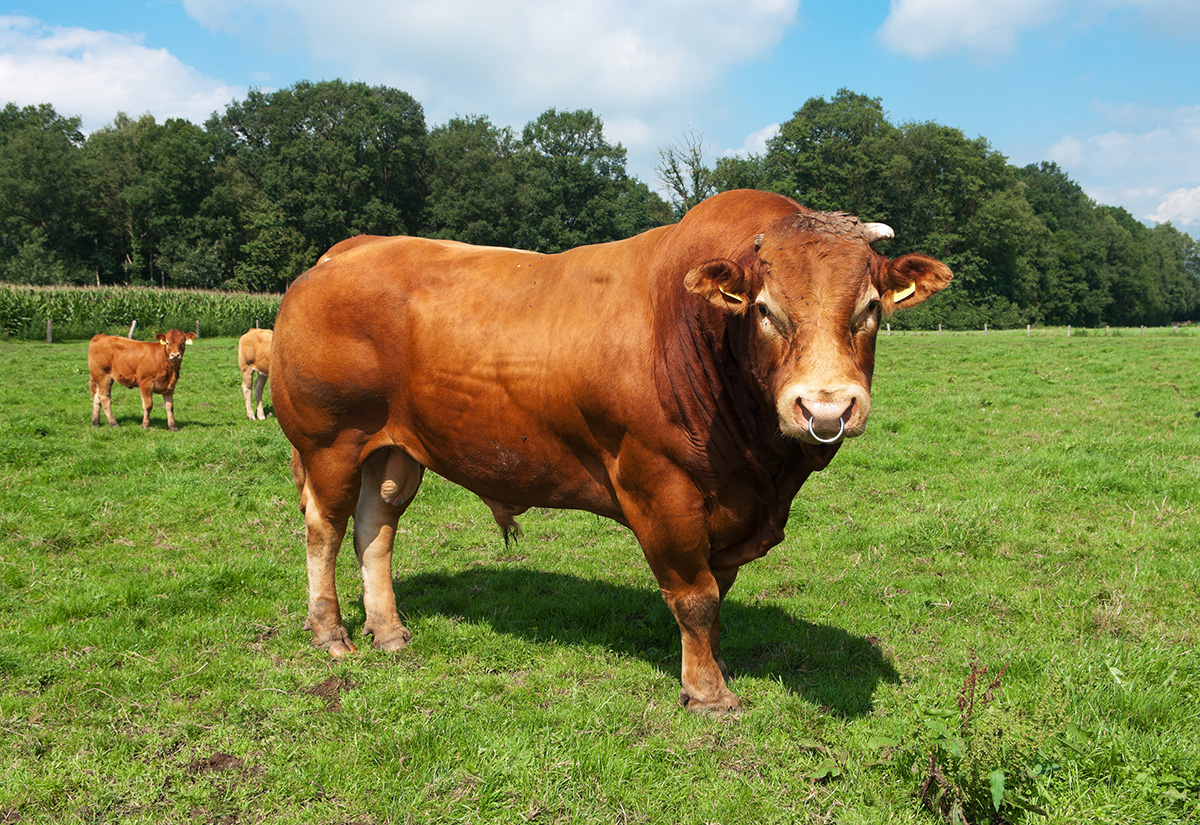17 Oct 2023
Farming’s use of sexed semen and synchronisation for dairy cattle
Emma Fishbourne considers the sustainability benefits of this practice and how veterinarians can convey its advantages to clients.

Image: SciePro / Adobe Stock
Successful sorting of sperm based on the presence of the X or Y chromosome with live births was first reported in rabbits in 1988.
Commercialisation of sex-sorted semen to cattle producers soon followed, although earlier products had low numbers of sperm due to low throughput, which meant reasonable prices could only be accomplished with reduced sperm number dosages. Conception rates were also 70% to 75% of those obtained by conventional semen (Seidel and DeJarnette, 2022).
UK dairy farmers were the first to have access to commercial sexed semen following the launch by Cogent in July 2000 (Telford et al, 2003).
Historically, we as veterinarians advised that sexed semen was only used on heifers due to the reduced conception rates; however, a reduction in production costs and improved conception rates due to refinements in sorting equipment, and modifications to other aspects of sperm processing and freezing, means it is now being more widely used across younger cows and heifers, with more data from its use in the field starting to become available.
Several companies offer sexed semen products. Sexcel from Genus ABS quotes conception rates for its sexed semen as 90% relative conception rate to conventional semen (www.absglobal.com/uk/services/sexcel). Cogent has several products on the market; its SexedULTRA-4M is quoted as having a lift of 11% in conception rates compared to its original sexed semen, with its newer product Ultraplus lifting this another 3%. According to its website, Ultraplus High Purity now also offers 96% to 97% gender accuracy, whether it is female dairy calves or bull beef calves (www.cogentuk.com/sexed-ultra-1). Typically, gender accuracy for sexed semen has exceeded 90%.
Why should we encourage clients to use sexed semen?
A review by Holden and Butler (2018) looked at the applications and benefits of sexed semen in dairy and beef herds.
In the dairy industry, using conventional semen results in the birth of surplus, unwanted bull calves with a low economic value. Bull calves are associated with higher risk of dystocia compared to heifer calves, and cows that have had an assisted calving have been shown to be at greater risk of culling (Bell et al, 2010).
Using sexed semen on heifers can help prevent dystocia, as a dairy heifer calf is likely to be smaller and reduce involuntary culling due to poor reproductive performance, ensuring longevity within the herd.
For our clients, it means they can select the best animals from which to breed their next generation of replacements, increasing the rate of genetic gain in their herds and improving production, sustainability and profitability. Heifers should have the best genetics, so these should be used to breed most of our replacements from, in addition to selecting the best cows.
Using sexed semen also enables clients to use beef semen on more animals, as they can select those they do not wish to breed replacements from for artificial insemination (AI), with beef giving them a more valuable calf crop. Many farms run their heifers with a beef bull due to heat detection issues if the heifers are kept elsewhere; however, this is reducing genetic gain in their herd and may pose a bigger risk to human health and safety, higher risk of injury to the heifers from mating or at calving, and potential disease risks are associated with buying in bulls which many clients would need to do.
Clients can get round heat detection issues by using synchronisation protocols. If you consider the cost of buying a bull in, disease and fertility testing it, keeping it and the risk highlighted previously, then synchronisation costs can be very reasonable in comparison. Plus, you get better genetic gain.
In well-managed herds, conception rates using sexed semen in heifers that are synchronised is comparable to AI to natural heats. Some useful links are available to clients to help them work out how many animals to put to sexed semen to get their replacements, including the Agriculture and Horticulture Development Board’s (AHDB) semen usage calculator (https://ahdb.org.uk/semen-usage-calculator).
By ensuring they have sufficient heifer replacements and rearing their own heifers, clients can improve on-farm biosecurity by not buying in, reducing the likelihood of expensive disease outbreaks.
Tools like this require clients to think about their cull rates, conception rates, whether they want to remain static or increase herd size, and to consider their youngstock mortality rates to work how many animals need serving to give them their replacements. By taking these values into consideration, it means clients are not spending money unnecessarily rearing animals they do not need; unless of course, your client is rearing heifers specifically to sell on as part of their business model.
If farms rear too many and have not considered their costs of rearing, they may be spending more than they are getting in return when selling them on. The average cost to rear a heifer has been estimated at £1,819, with a range of £1,432 to £2,206 (Boulton et al, 2017). Rearing heifers typically accounts for about 20% of dairy costs (AHDB). Clients can use a freely available tool to work out their costs via https://ahdb.org.uk/heifer-rearing-cost-calculator
On most farms, the cost of heifer rearing is repaid in the first two lactations. In a study by Boulton et al (2017), the mean time from first calving until breaking even was 530 days, with a range of 237 to 823 days.

Across the EU, dairy and beef account for 70% of greenhouse gas emissions. The opportunity to improve beef production, generating more beef from dairy, has been investigated and has shown the biggest reduction in greenhouse gases could be achieved by using sexed semen to generate female replacements, and more beef semen to produce beef-cross calves reducing the carbon footprint of beef (Holden and Butler, 2018).
Variations exist between animals in feed efficiency and greenhouse gas emissions; therefore, selective breeding for these, which can be accelerated with sexed semen, can further reduce greenhouse gas emissions from the dairy and beef sectors.
Studies have looked at the carcases of beef crosses produced from dairy cows and concluded that the cross-bred calves produced were of high value, with good growth, muscularity, carcase characteristics and meat quality (Bittante et al, 2023).
Male sexed semen could be used in beef herds to increase the number of heavier and faster-growing males, but the use of natural mating over AI in many beef systems has limited its use. Farrell et al (2022) looked at the profitability of male sexed semen use in extensively farmed beef cow herds in New Zealand and concluded that it was not currently economically feasible, but in the future, access to higher genetic merit sires and more male offspring may make it more profitable than all-natural mating.
As already highlighted, using sexed semen helps to reduce the numbers of unwanted dairy bull calves, which are often of little monetary value and may be unsuitable for beef production, with euthanasia the only option. Producing surplus dairy bull calves has ethical and animal health and welfare implications, which consumers are becoming more aware of.
The author believes vets should also remember that clients are also affected; they put a lot of effort into getting a cow pregnant and may have had to deal with dystocia, only to be left in the awful position of having to cull very young animals.
A 2021 pilot study in Ireland looked at the perspective of key industry actors on the use of sexed semen to reduce the number of surplus dairy bull calves. The pilot survey was completed by farmers (n=6), veterinarians (n=17) and dairy farm advisors (n=11). Of these, 80% of farmers, 100% of veterinarians and 62% of the advisors believed that the use of sexed semen had a positive influence on herd welfare (Balzani et al, 2021).
This same study looked at barriers to the use of sexed semen, and all the different groups identified lower conception rates, lower availability and higher costs.
Conclusion
Sexed semen has plenty of advantages. The key issues around conception rates have been somewhat addressed in recent years, with the gap narrowing between those achieved with sexed semen versus conventional semen.
It is, however, important to highlight to clients that to achieve the rates quoted (regardless of whether it is sexed or conventional semen they are using), they still need good management and nutrition.
Heifers need to be 55% to 60% of mature cow bodyweight at mating and any active disease needs to be controlled.
With the demand for dairy and beef products globally increasing, sexed semen can be used to improve production efficiency and allow clients to produce products that are more sustainable and socially acceptable.
Events are rapidly changing, and it is likely more bulls will become available, conception rates and gender accuracy may improve further, and costs may reduce as research continues and companies invest in this technology.

